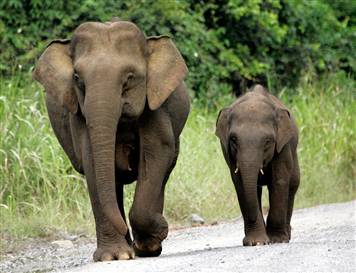Pygmy Elephant

One of the most endangered species in Borneo, the pygmy elephant lives in the forests and lowland river valleys feeding on grasses, fruits, palms and banana plants. As Asia’s largest land mammal, hunters seeking ivory tusks and the loss of habitat from deforestation threaten this unique elephant species.
The pygmy elephants of Borneo have always been a mystery to science. As a gift to the Sultan of Sulu, many speculated that the animals were shipped from Sumatra or Java and set free on Borneo Island during the elephant trade from the 16th to 18th centuries. It was not until DNA testing took place that scientists realized that these animals were a separate wild population.

Borneo is the world’s third largest island. But the pygmy elephant occupies only a small portion of rainforests in Sabah, Malaysia. Requiring mineral salts and water, elephants need to be near rivers to maintain their health. Other areas of Borneo are too populated with settlements. This increases hunting pressure and leads to more human-wildlife conflicts, especially when these massive mammals trample gardens and plantations during nightly feeding forays.
Concentrated in northeastern Borneo, less than 1,000 animals remain in the wild. Satellite tracking along the tributaries of the Kinabatangan River revealed a dramatic decline in elephants, as large forest patches disappeared. Logging also cut off traditional pathways to other food sources and reduced contact among elephant family groups, usually from 40-50 animals, for breeding. Unfortunately, elephants prefer the same floodplain forests sought by logging and oil palm plantation companies.
Conservation groups, such as the World Wide Fund for Nature (WWF), work with local forestry and wildlife agencies to set up sanctuaries in suitable habitats across the “heart” of Borneo. The recent proof of the pygmy elephant as a separate subspecies was a remarkable achievement. Now the real riddle is how to protect the last remaining wild populations.
